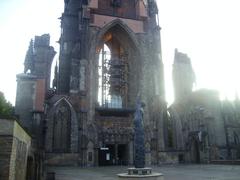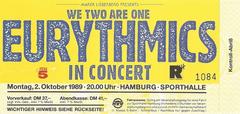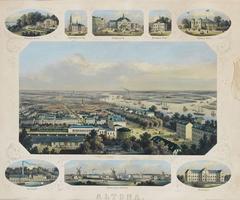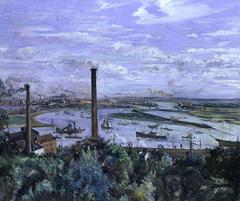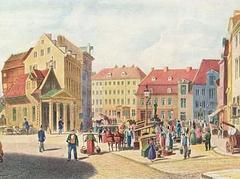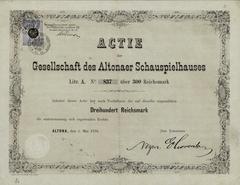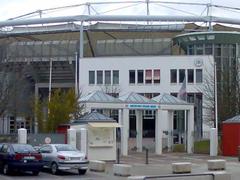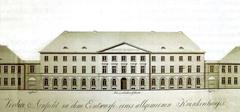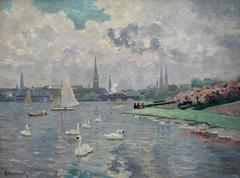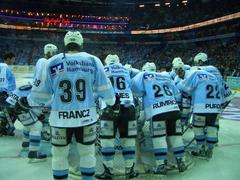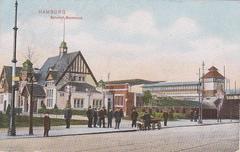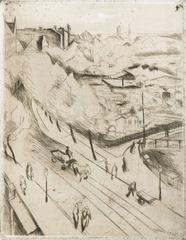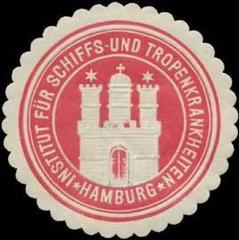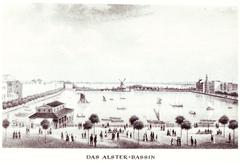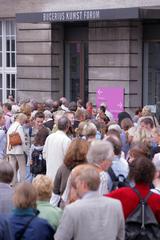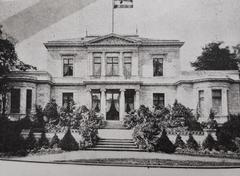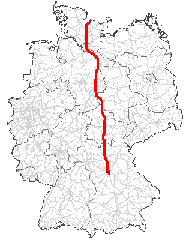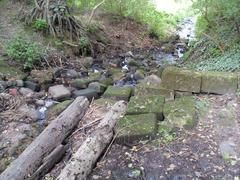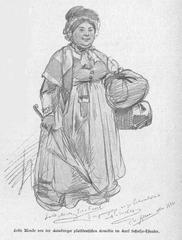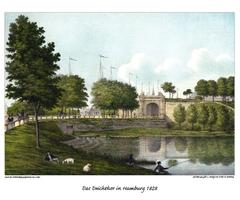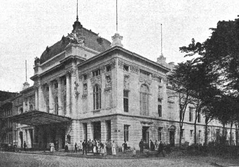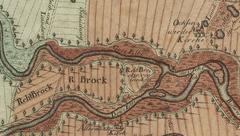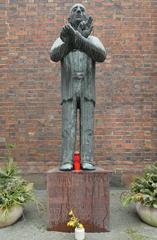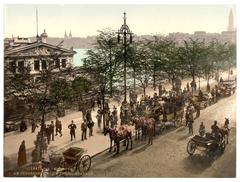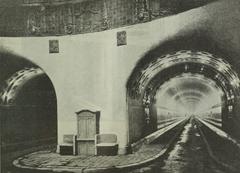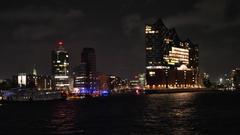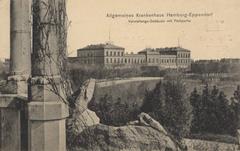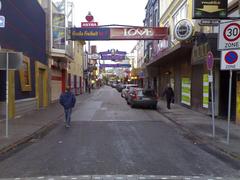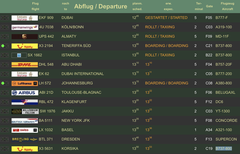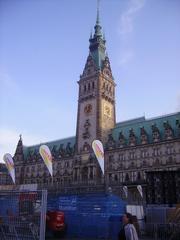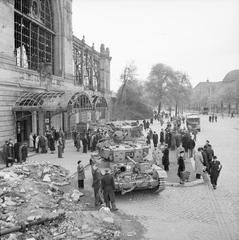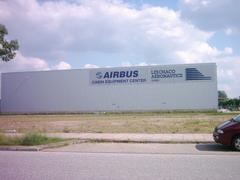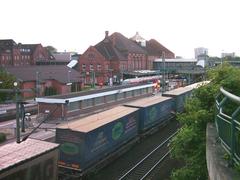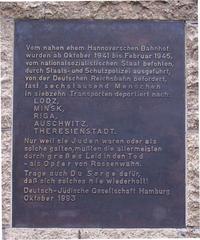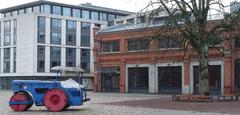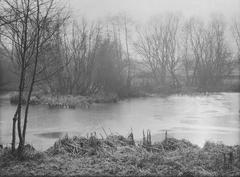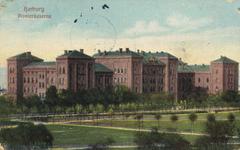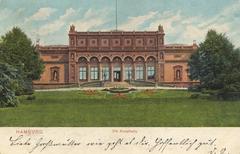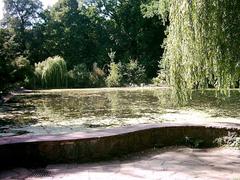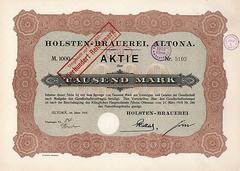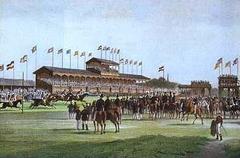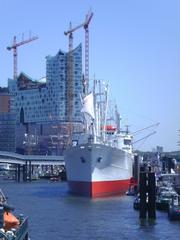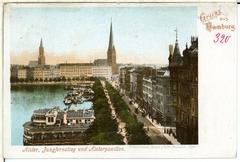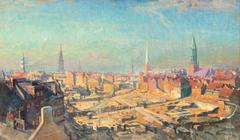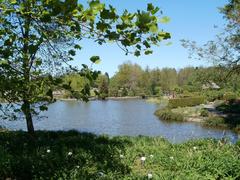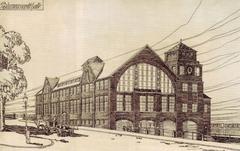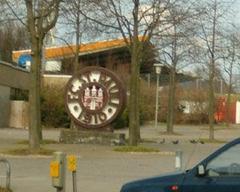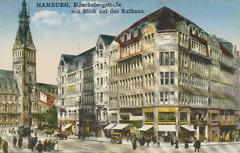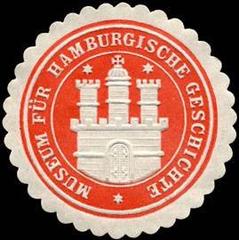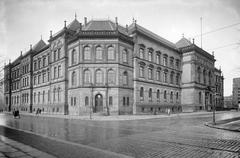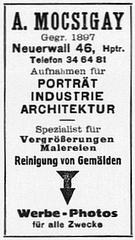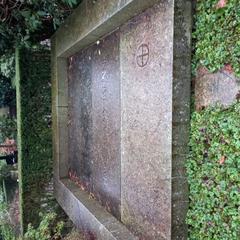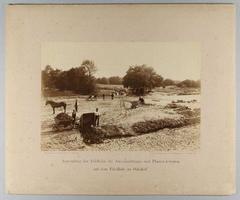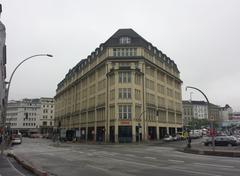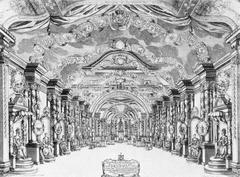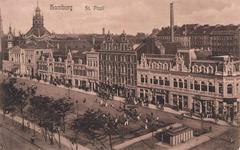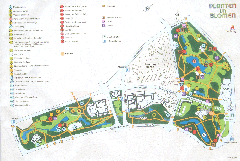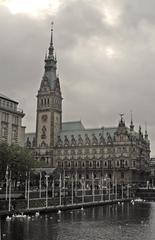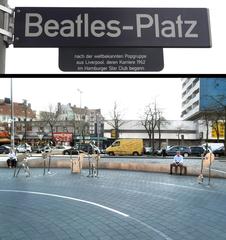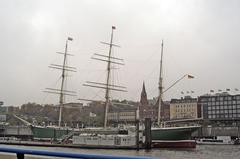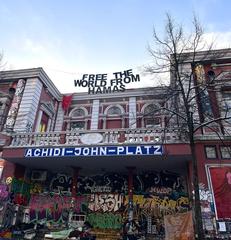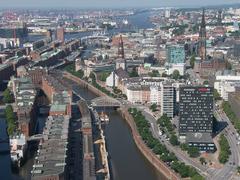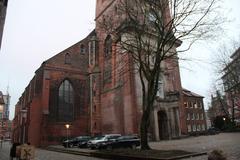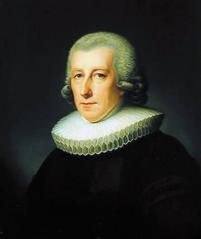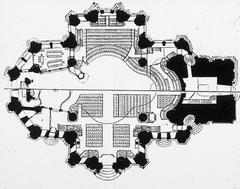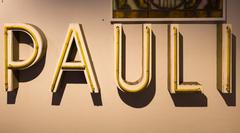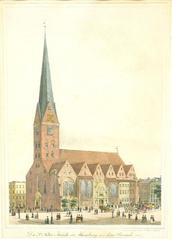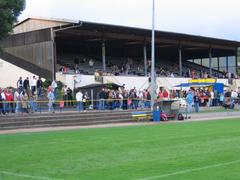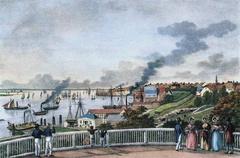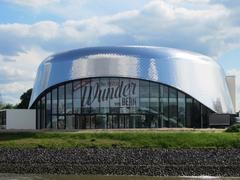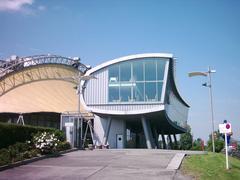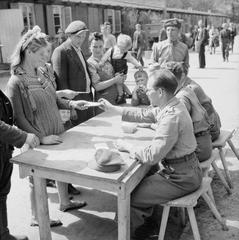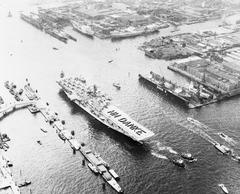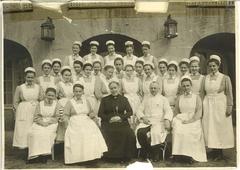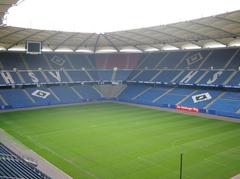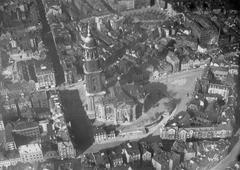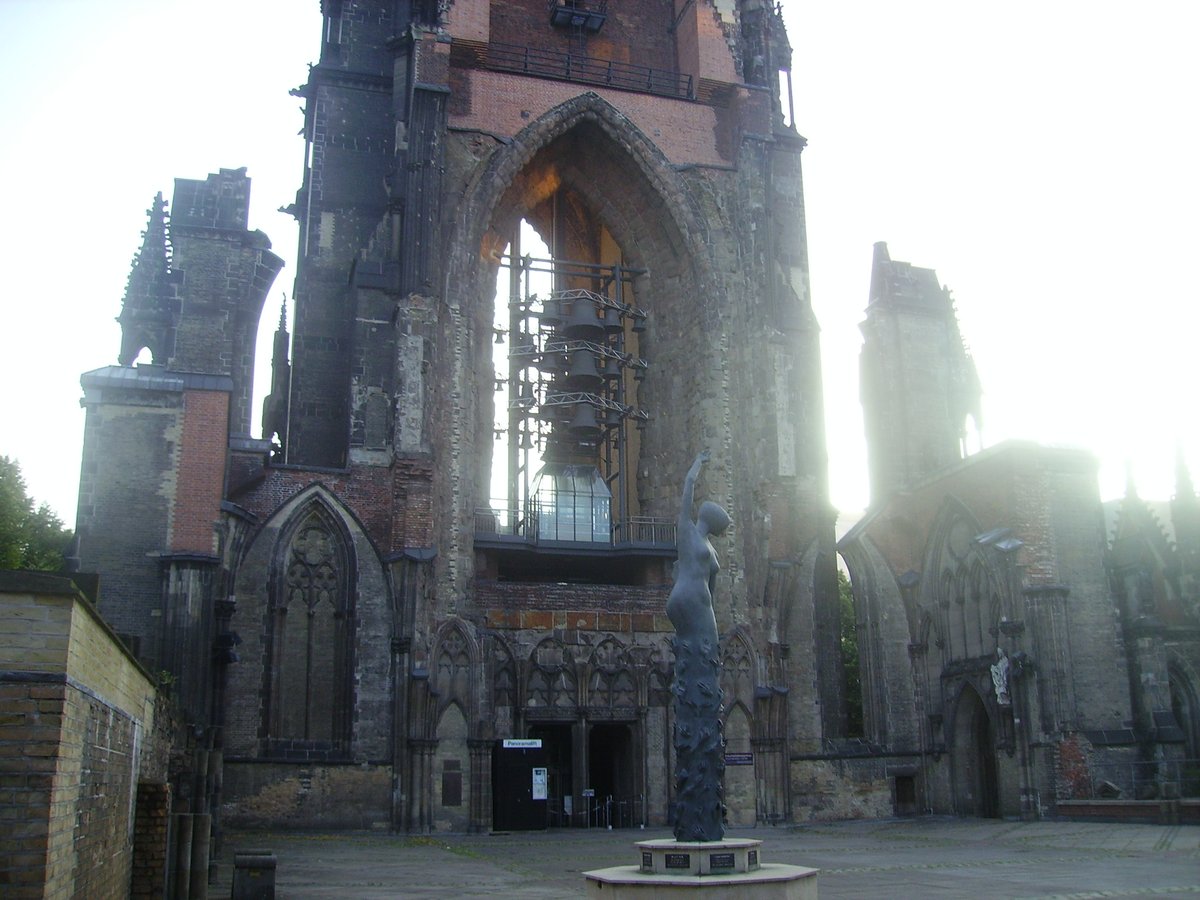
Visiting Kirchenruine St. Nikolai: History, Tips, and More
Publication Date: 18/07/2024
Introduction to Kirchenruine St. Nikolai
Kirchenruine St. Nikolai, situated in the heart of Hamburg, Germany, is a landmark that intertwines the threads of history, architecture, and cultural significance. Originally constructed in the 12th century, the church has witnessed the ebb and flow of Hamburg’s fortunes over the centuries. Named after Saint Nicholas, the patron saint of sailors, St. Nikolai has been a beacon for the maritime community, evolving from a modest wooden structure to a grand Gothic masterpiece. The site has weathered catastrophic events, including the Great Fire of 1842 and the devastating bombings of World War II during Operation Gomorrah in 1943, which left it in ruins (Discover Kirchenruine St. Nikolai). Today, the preserved ruins serve as a poignant memorial to the victims of war and tyranny, offering a space for reflection and education. This comprehensive guide aims to provide visitors with all the necessary information to experience the historical depth and cultural resonance of Kirchenruine St. Nikolai, including visiting hours, ticket prices, travel tips, and nearby attractions.
Table of Contents
- Introduction
- History
- Modern-Day Significance
- Visitor Information
- Travel Tips
- Nearby Attractions
- Accessibility
- Preservation Efforts
- Cultural Impact
- FAQ
- Conclusion
History
Origins and Early History
The St. Nikolai Church, originally built in the 12th century, is one of Hamburg’s oldest and most historically significant churches. Named after Saint Nicholas, the patron saint of sailors, the church was initially constructed to serve the growing maritime community in Hamburg. The first wooden structure was replaced by a more substantial Romanesque stone building in the 13th century, reflecting the city’s increasing wealth and importance as a trading hub.
Gothic Transformation
In the 14th century, St. Nikolai underwent a significant transformation, adopting the Gothic architectural style that was prevalent in Europe at the time. This period saw the construction of a towering spire, which became a prominent feature of Hamburg’s skyline. The church’s Gothic design included intricate stone carvings, large stained glass windows, and a vaulted ceiling, making it a masterpiece of medieval architecture.
The Great Fire of 1842
One of the most pivotal events in the history of St. Nikolai was the Great Fire of Hamburg in 1842. The fire, which raged for three days, destroyed a large part of the city, including the original St. Nikolai Church. The devastation was immense, but it also provided an opportunity for a grand reconstruction. The decision was made to rebuild the church in a neo-Gothic style, which was popular in the 19th century.
Neo-Gothic Reconstruction
The reconstruction of St. Nikolai began in 1846 under the direction of the English architect George Gilbert Scott. The new design was ambitious, featuring a 147-meter-high spire that, upon completion in 1874, made St. Nikolai the tallest building in the world at the time. The church’s interior was equally impressive, with elaborate altars, sculptures, and stained glass windows that depicted biblical scenes and saints.
World War II and Destruction
St. Nikolai’s history took another tragic turn during World War II. Hamburg was heavily bombed by Allied forces, and the church was severely damaged during Operation Gomorrah in July 1943. The intense bombing raids, which aimed to cripple Germany’s industrial capabilities, left the church in ruins. The spire, however, remarkably survived the bombings and stood as a stark reminder of the war’s devastation.
Post-War Period and Memorialization
After the war, the decision was made not to rebuild St. Nikolai but to preserve its ruins as a memorial to the victims of war and tyranny. The church’s remains were stabilized, and the site was transformed into a place of reflection and remembrance. In 1951, a memorial plaque was installed, and in 1977, the ruins were officially designated as a memorial site.
Modern-Day Significance
Today, the Kirchenruine St. Nikolai serves as a poignant historical monument and a symbol of peace. The site includes a museum that provides detailed accounts of the church’s history, the destruction during World War II, and the broader impact of the war on Hamburg. Visitors can also take an elevator to the top of the spire, which offers panoramic views of the city and serves as a powerful vantage point for reflecting on the past.
Visitor Information
Visiting Hours
The site is open daily, with varying hours depending on the season. It is advisable to check the official St. Nikolai Memorial website for the most up-to-date information.
Tickets
There is an admission fee for the museum and the spire elevator. Discounts are available for students, seniors, and groups.
Travel Tips
For those planning to visit, the Kirchenruine St. Nikolai offers a deeply moving experience. The museum provides a wealth of information through exhibits and multimedia presentations. Guided tours are available, offering in-depth insights into the church’s history and significance. The panoramic views from the spire are a highlight, providing a unique perspective on Hamburg’s past and present.
Nearby Attractions
While visiting Kirchenruine St. Nikolai, consider exploring other historical sites in Hamburg. Nearby attractions include the Speicherstadt, Miniatur Wunderland, and the International Maritime Museum.
Accessibility
The site is accessible to visitors with disabilities, with elevators and ramps available.
Preservation Efforts
Ongoing preservation efforts ensure that the ruins of St. Nikolai remain a lasting tribute to history. The site is maintained by the St. Nikolai Memorial Foundation, which organizes educational programs, exhibitions, and events to promote peace and reconciliation. The foundation also collaborates with international organizations to raise awareness about the consequences of war and the importance of preserving historical sites.
Cultural Impact
The Kirchenruine St. Nikolai has had a profound cultural impact on Hamburg and beyond. It stands as a testament to the resilience of the city and its people. The church’s history is a microcosm of Hamburg’s broader historical narrative, encompassing periods of prosperity, destruction, and rebirth. The site attracts thousands of visitors each year, including historians, architects, and tourists, all of whom come to learn about and reflect on its rich history.
FAQ
Q: What are the visiting hours for Kirchenruine St. Nikolai?
A: The site is open daily, with varying hours depending on the season. Please check the official St. Nikolai Memorial website for the latest information.
Q: How much are tickets to Kirchenruine St. Nikolai?
A: There is an admission fee for the museum and the spire elevator. Discounts are available for students, seniors, and groups.
Q: Is Kirchenruine St. Nikolai accessible to visitors with disabilities?
A: Yes, the site is accessible with elevators and ramps available.
Conclusion
By preserving the ruins of St. Nikolai, Hamburg honors its past while educating future generations about the importance of peace and the devastating impact of war. The Kirchenruine St. Nikolai remains a powerful symbol of resilience and a must-visit for anyone interested in history and culture. For more updates, follow us on social media or check out our other related posts.
References and Further Reading
- Visiting Kirchenruine St. Nikolai - History, Visiting Hours, and Tickets in Hamburg, 2024, Author source url
- Discover Kirchenruine St. Nikolai - A Historic Gem in Hamburg – Visiting Hours, Tickets, and More, 2024, Author source url
- Kirchenruine St. Nikolai - Visiting Hours, Tickets, and Tips for Your Hamburg Visit, 2024, Author source url
